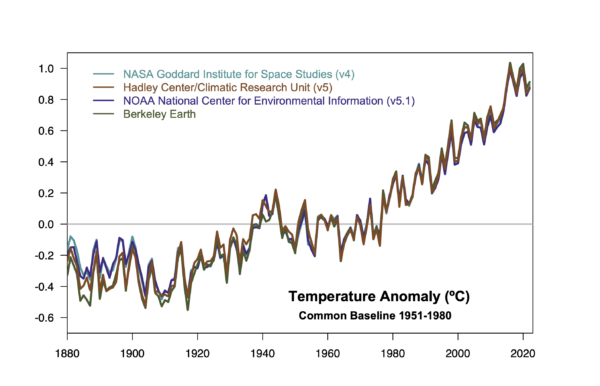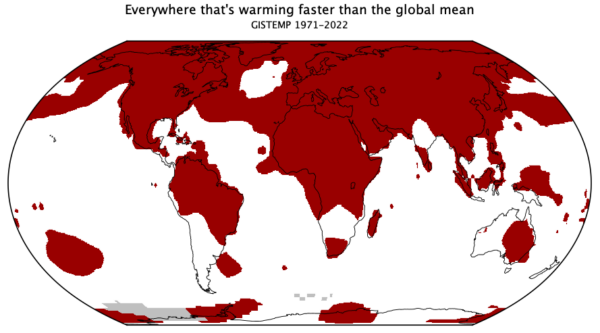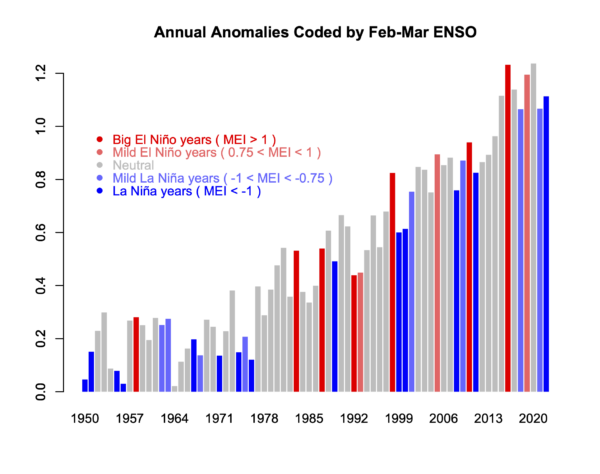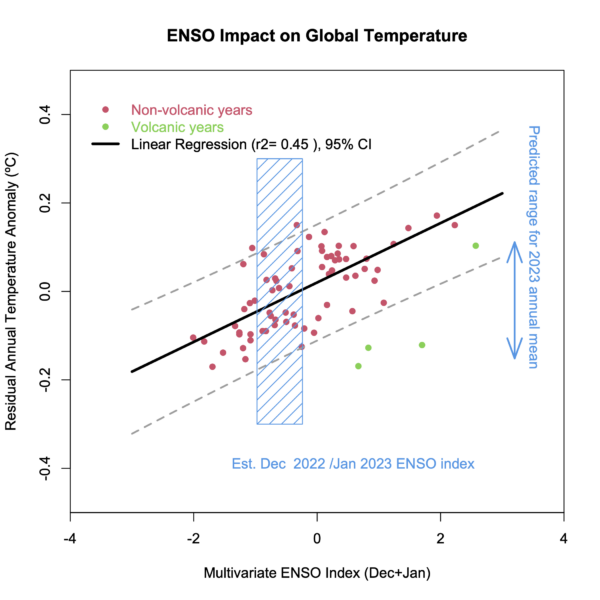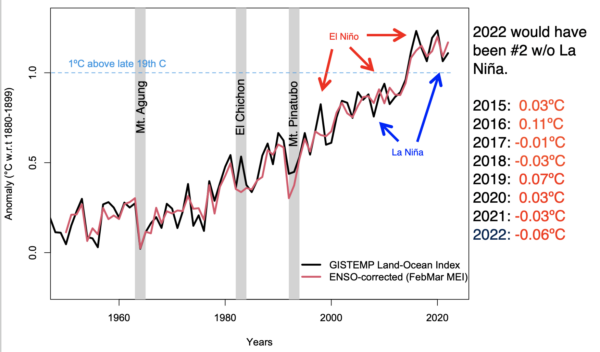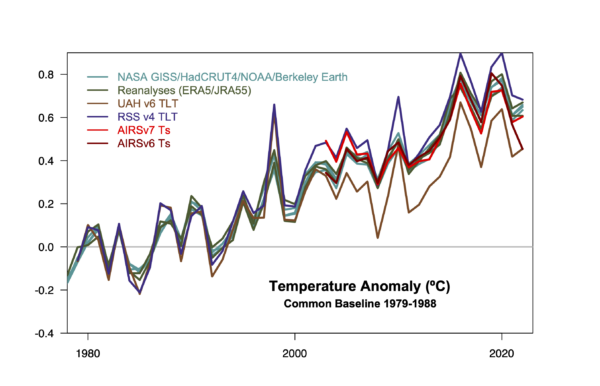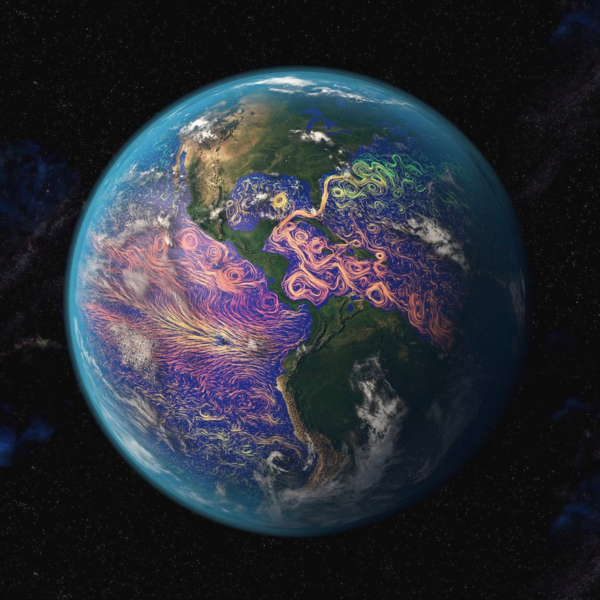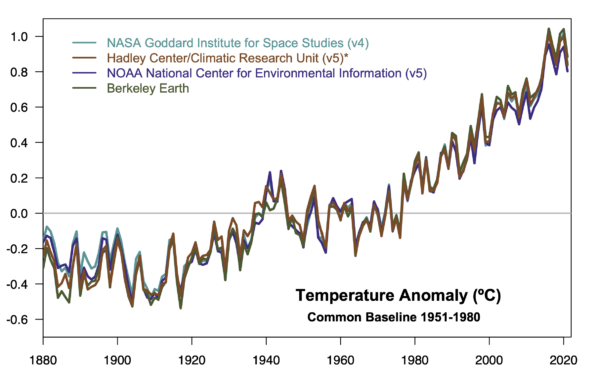This is a follow-on post to the previous summary of interesting work related to the temperatures in 2023/2024. I’ll have another post with a quick summary of the AGU session on the topic that we are running on Tuesday Dec 10th, hopefully in the next couple of weeks.
6 Dec 2024: Goessling et al (2024)
This is perhaps the most interesting of the papers so far that look holistically at the last couple of years of anomalies. The principle result is a tying together the planetary albedo and the temperature changes. People have been connecting these changes in vague (somewhat hand-wavy ways) for a couple of years, but this is the first paper to do so quantitatively.
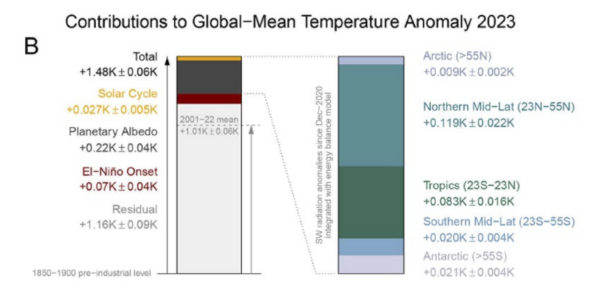
The authors use the CERES data and some aspects of the ERA5 reanalysis (which is not ideal for these purposes because of issues we discussed last month) to partition the changes by latitude, and to distinguish impacts from the solar cycle anomaly (~0.03 K), ENSO (~0.07K) and the albedo (~0.22K) (see figure above).
What they can’t do using this methodology is partition the albedo changes across cloud feedbacks, aerosol effects, surface reflectivity, volcanic activity etc., and even less, partition that into the impacts of marine shipping emission reductions, Chinese aerosol emissions, aerosol-cloud interactions etc. So, in terms of what the ultimate cause(s) are, more work is still needed.
Watch this space…
References
- H.F. Goessling, T. Rackow, and T. Jung, "Recent global temperature surge intensified by record-low planetary albedo", Science, 2024. http://dx.doi.org/10.1126/science.adq7280
